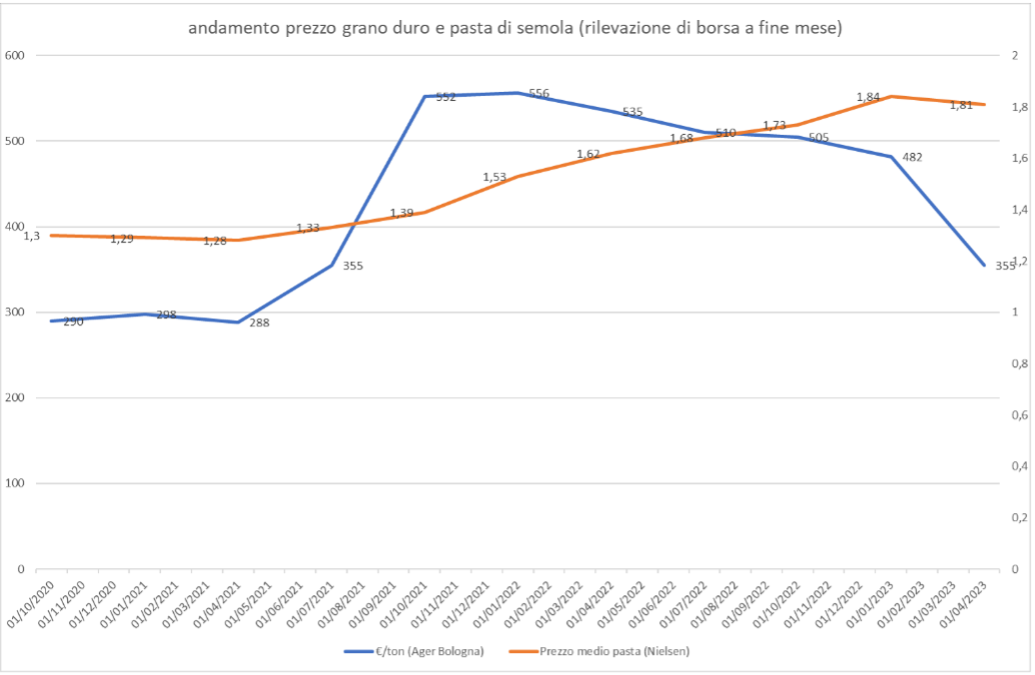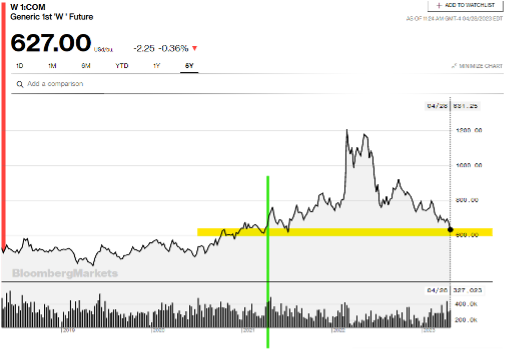I’ll explain how pasta prices really change

The experience relating to other bullish flare-ups of the past leads us to reasonably hypothesize that – if the price of wheat remains at these levels or (less probable) falls further – the competitive dynamics of the pasta market will get to work and also the price some dough will come down. Barring surprises related to the new imminent harvest. Giuseppe Liturri's analysis
A few days ago the big drum on the subject of the price of pasta started which does not decrease , in the face of substantial drops in the cost of durum wheat, an essential raw material from which it is produced.
On the part of consumer associations, imaginative interventions by the Antitrust are invoked, cartels are hypothesized between pasta factories, shouts are made to the defrauded consumer.
It would be enough to have a minimum of knowledge of the dynamics of the sector to understand that it is a flash in the pan destined to burn out soon. In any case, the arguments that feed it, in the face of incontrovertible data, melt like snow in the sun.
It must be stated that there is an intermediate good (durum wheat semolina) between pasta and durum wheat and therefore there is another market – that of semolina – which affects the costs of pasta factories, upstream of which there is the milling sector with its own dynamics. Among these, the raw material procurement policy and inventory management stand out. No mill operates by buying the grain to grind it immediately but procures on national and international markets well in advance of the actual moment of consumption of the raw material. Between physical inventories and forward purchase commitments, a medium-sized mill can hold up to the equivalent of 3 or 4 months of production. This is because the national wheat harvest is concentrated in the months of June and July and foreign production is obviously also seasonally concentrated, as well as being affected by relatively long transport times.
In short, durum wheat is a commodity which by its nature cannot be bought every day when needed.
What happens when the price of this raw material, for whatever reason, increases even to a very significant extent, as happened starting from the summer of 2021?
The mills try to transfer this increase to the price of the semolina sold to the pasta factories and the latter try to transfer this higher cost to the price of the pasta. But this happens very slowly, for two essential reasons: 1) the mills have stocks of grain and therefore are not immediately affected by cost increases. 2) The pasta sector is fairly competitive and large-scale distribution is not willing to accept increases with immediate effect, but only after a few months.
In fact, exactly what can be observed in the graph is happening: at the end of September 2021, although the price of wheat had roughly doubled compared to May, the price of pasta (AC Nielsen surveys average price over the four ending weeks) had increased significantly modest. Only in the first months of 2022 – as the mills and pasta factories ran out of wheat stocks at a lower price and large-scale retailers accepted the requests for increases – were the mills and pasta factories able to completely transfer the increases in the cost of wheat downstream. However, they were not the only ones, since packaging and energy also played a significant role.

It took at least 4 months for the increase in the cost of wheat to be transferred to the price of pasta. This is also because it takes time to understand whether a cost increase is transitory or permanent and therefore proceed with the adjustment of the price lists, an always very delicate operation.
We are now at the end of April 2023 and the average price of wheat recorded on the Bologna commodity exchange (but even observing the Chicago Cbot the result does not change) has substantially returned to the levels of the end of July 2021, when the surge in prices, but the price of pasta was still firm.

The experience relating to other bullish flare-ups of the past leads us to reasonably hypothesize that – if the price of wheat remains at these levels or (less probable) falls further – the competitive dynamics of the pasta market will get to work and also the price some dough will come down. Barring surprises related to the new imminent harvest.
It's the market, honey. It is enough to know its dynamics, without invoking improbable and ineffective dirigiste interventions.
This is a machine translation from Italian language of a post published on Start Magazine at the URL https://www.startmag.it/economia/vi-spiego-come-cambiano-davvero-i-prezzi-della-pasta/ on Mon, 01 May 2023 06:10:12 +0000.
